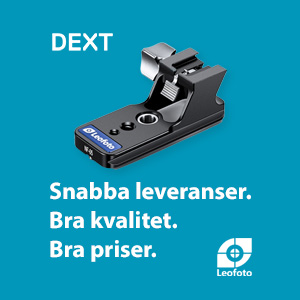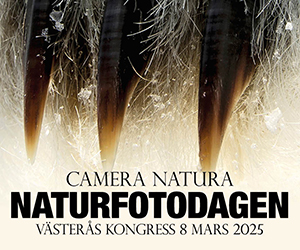Man kan hålla med i mycket av vad du säjer Ove. Vilken betydelse har brusnivåer och DR rent praktiskt. Det här är så oerhört komplext och svårt att greppa eftersom så många faktorer interagerar innan ett färdigt resultat av en bild bränns ner i minnet. Jag har saxat några klipp ur en diskussion som pågått på Dyxum.com (Minolta/Sony site) i ett möte kallat "Am I crazy to consider jumping ship?" Mötet öppnades av en frustrerad Sony A700 ägare som inte fick sitt kamerahus att fokusera korrekt med sina objektiv bl.a. och han funderar därför på att byta till Nikon. Senare kom diskussionen att handla även om andra faktorer inte minst brus.
Intressant i denna tråd är inte bara diskussionerna om olika kamerasystemens olika fördelar utan framförallt synen på den PRAKTISKA betydelsen av framförallt brus.
Jag tror verkligen att jag förstår det Lars och Mikael försöker göra efter att ha hängt med i denna tråd över snart 100 sidor och det de gör är faktiskt viktigt. De försöker reda ut hur det ligger till med en del gamla vedertagna sanningar i dialog med både oss och många andra kloka människor och det är ytterst lovvärt och förtjänar allt stöd. För att göra detta måste man undersöka några få faktorer i taget (allt annat lika). Sen är det faktiskt så att både Lars och Mikael verkligen har öppnat sig förutsättningslöst för en dialog på ett helt annat sätt än före denna tråd. Om du läst denna tråd så är det ju just det som skett att man slutet kolla på bilder enbart i 100%. Det är ett stort framsteg. Den bild du målar upp av Lars och Mikael tyckte jag också stämde rätt bra innan denna tråd men den stämmer inte alls lika bra idag som då. Det har hänt väldigt mycket här på väldigt kort tid.
Det man kan hoppas kommer ur detta är en större medvetenhet kring dessa frågor och folk faktiskt lyssnar på sina behov när de väljer kamera och kamerasystem. Synd att avstå från det när möjligheterna aldrig varit större!
Citat 1 från Dyxum:
"I don't even think about image noise anymore. I've never had a photo rejected by a stock agency or a client for noise. Composition, focus, color, and exposure are always more important....
Jon
Jon Van de Grift
Photojournalist and Educator"(slut citat)
Citat 2 från Dyxum:
"Is noise evil?
Sometimes it might be, but very often noise brings an image to life I think. Clean images tend to be cold without a soul.
There is too much talk about image noise in my opinion. It almost always done by enthusiasts that know too much about technical details and who have a lot of time to inspect every single pixel in an image.
There are similar discussions in other technical topics, like framerates in computer games or horsepower of automobiles or datarates in UMTS phones.
Maybe try looking at the results your photographs produce. Isn't the smile of people looking at the photographs or the publication of it somewhere much more worth than the photograph itself?
Nobody needs a photograph, people need the information or emotion carried by it.
Maybe I am alone, but I like image noise. Try working with it, try not to destroy or reduce it, use it as essential integral part of your photograph." (slut citat)
Citat 3 från Dyxum:
"This is the Minolta 100-200mm f/4.5. Truly an impressive lens. Sure, there's more CA than the comparable Nikkor in this focal range (70-200mm AF-S f/2.8), but this is reasonably easy to correct in processing. Other than CA, I don't worry about anything when shooting with this lens. When I compare color, tonality, etc., I simply fill my monitor (fit to screen) with the images because 100% viewing is nearly worthless for this type of comparison. Rarely, I'll print a couple images at 8X10 for this same purpose and again, the Minolta shines. When I compare sharpness, I compare at 75% and 100% on my monitor. The Nikkor is slightly sharper at certain apertures, but not enough that it makes an obvious difference in LCD viewing, printing, or in the eyes of my clients. In other words, I sacrifice a little sharpness for the improved color, contrast, and quality of tonal gradations that I get from the Minolta. There is, after all, a sharpening button in Lightroom, but there is most certainly not a Minolta button in Lightroom. Just FYI, I'm a ten-year Nikon user and I still shoot with Nikon.
Citat 4 från Dyxum:
"I currently shoot with the Nikon D300 and Sony A350, side by side. I use high-end Nikkor glass, no consumer lenses. I also shoot with the Sony A700, but I prefer the images I'm getting from the A350. I publish my photos in various media, so quality is important. At the end of the day, I'm always excited to see my shots from my D300 because I know they're going to be very good, at least in terms of the technical aspects of image quality. Assuming, of course, my dead battery syndrome hasn't rendered my D300 inoperable. At the end of the day, I'm hopeful that my A350 photos are going to turn out okay, and shooting with a 20-year old $80 Minolta lens makes me a little nervous. This is despite the fact I've never had a failure from this consumer camera. When I pull up the photos side by side on my desktop, my jaw always drops. My cheap Sony setup has a tendency to leave my expensive Nikon setup feeling very flat in terms of tonality, dynamic range, contrast, color rendition, etc. Sure, the D300 has noticeably lower noise at high ISO (and is very similar to the D700 in that regard), but I try to stay away from high ISOs regardless. My colleagues do the same. Is the D700 going to make you a better photographer? Absolutely not. If you need high fps or really good high ISO performance, then it might be something to consider. But do your research first - go to the camera store, take some shots with the Nikon, get to know the feel of the camera, and compare your images to your Sony shots before you jump ship. You might be surprised. " (slut citat)
Jon
Jon Van de Grift
Photojournalist and Educator
(slut citat)







